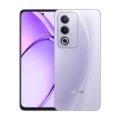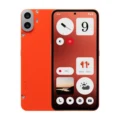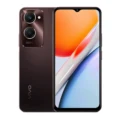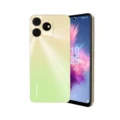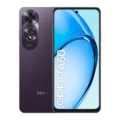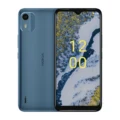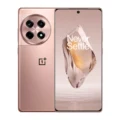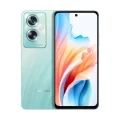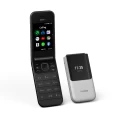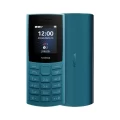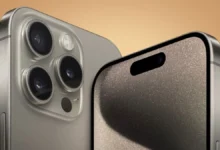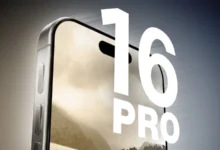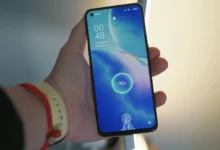Symphony S30




-
Display: 2.4 inches (6.1 cm)
-
CPU: Spreadturm 6531E
-
RAM: 4 MB
-
ROM: 4 MB
-
Camera: 0.08 MP
-
Battery: 1000 mAh
Specifications
General
| Name | Symphony S30 |
| Brand | Symphony |
| Model | S30 |
| Announced | 10 August, 2022 |
| Release Date | 18 August, 2022 |
| Manufacturer Manufacturer Company: A manufacturer is a company engaged in the production of products. | Symphony |
| Made in Made in: Made in is a label or indication on a product that specifies the country where the product was manufactured or produced. | Bangladesh |
Display
| Display Type | TFT |
| Screen Size | 2.4 inches (6.1 cm) |
| Resolution | 320 x 240 pixels |
| Multitouch Multitouch: Smartphone multitouch is a technology that allows the screen to recognize and respond to multiple touch points simultaneously. It enables users to perform gestures like pinch-to-zoom, rotation, and swiping with multiple fingers, enhancing the overall interactivity and usability of the device. |
Design
| Height | 123.5 mm |
| Width | 53 mm |
| Thickness | 10.7 mm |
| Weight | 132g |
| Material Built Material: The physical construction materials of a smartphone, influence its durability, weight, and aesthetic qualities. Common materials include metal, glass, plastic, ceramic, etc. | Plastic |
| Colors | Light Blue, Pearl White, Mint Green, Shiny Black |
Camera
| Rear Camera | Single |
| Resolution | 0.08 MP |
| Rear Flash | No |
| Image Resolution | 640 x 480 Pixels |
| Camera Features | 8x Zoom |
Battery
| Capacity Battery Capacity: Battery capacity in smartphones refers to the amount of energy a battery can store, typically measured in milliampere-hours (mAh). It indicates how long a battery can power the device before needing a recharge. | 1000 mAh |
| Battery Type | Li-ion |
| Removable Removable Battery: A removable battery in a smartphone is a battery that users can easily take out and replace without tools. Removable batteries were more common in older models; modern smartphones favor non-removable batteries for sleeker designs and better water resistance. | |
| Talk Time | 08H Hours |
| Standby Time | 220H Hours |
| Fast Charging | 2.75 W Charging |
Performance
| Chipset Chipset: In smartphones, the chipset is like the device's brain, controlling everything from processing tasks to managing connectivity. It includes the CPU, GPU, modem, and other components, determining the device's performance and capabilities. Different smartphones use different chipsets made by companies like Qualcomm or MediaTek. | Spreadturm 6531E |
| CPU CPU (Central Processing Unit): The CPU, commonly known as the processor, is responsible for processing instructions to perform various functions that enable a device to operate properly. Often described as the brain of computers, smartphones, and tablets, the CPU plays a crucial role in executing tasks and running applications on these devices. Smartphones and tablets rely heavily on their processors to carry out every task, from running apps to managing system operations. Therefore, the processor is an incredibly important factor to consider when selecting any type of computing device, including smartphones. | Single core, 1 GHz |
| Architecture Instruction Set Architectures (ISAs): In the context of smartphones, "architecture" refers to the design and structure of the processor, which determines how it processes information and executes instructions. This encompasses the processor's instruction set, memory management, and overall design principles. One common term related to architecture is "64-bit architecture," which has significant implications for performance and capabilities. | 32 bit |
| Fabrication Semiconductor Fabrication: Fabrication in the context of semiconductors and microprocessors refers to the process of manufacturing integrated circuits (ICs) or chips. This involves creating the physical structures of a chip, such as transistors and other electronic components, on a silicon wafer. The term "fabrication" is often used interchangeably with "process node" or "technology node," which indicates the manufacturing technology used to create these chips. | 22 nm |
| RAM Random Access Memory (RAM): RAM is a type of computer memory that is used to store data temporarily while a device is in use. RAM is a critical component in smartphones, enabling fast access to data, smooth multitasking, and efficient operation of applications. The amount and type of RAM can significantly impact the performance and user experience of a smartphone. | 4 MB |
Storage
| ROM ROM (Read-Only Memory): In the context of smartphones and other electronic devices, ROM typically refers to the built-in storage where the operating system, system files, and pre-installed apps are stored. | 4 MB |
| MicroSD Card MicroSD Card Slot: A microSD card is a small, portable storage device used to expand the storage capacity of electronic devices, including smartphones, tablets, digital cameras, and more. It's inserted into a device's MicroSD card slot to store extra photos, videos, music, and other data. | Yes, Dedicated Slot |
| Expandable Storage | Yes, Up to 16 GB |
Network
| Number of SIM | Dual SIM |
| SIM Size | Standard SIM |
| SIM Slot Type | Standard SIM+1 Micro SD Slot |
| Network Support | 2G |
| Network Speed | HSPA 21.1 |
| Technology | GSM |
| VoLTE VoLTE (Voice over LTE): VoLTE is a technology that allows voice calls to be made over a 4G LTE network, rather than the traditional 2G or 3G networks. In summary, VoLTE enhances call quality and functionality by using the 4G LTE network for voice communications. | |
| 2G Bands 2G (Second Generation): 2G is a wireless technology standard for mobile telecommunications that was introduced in the 1990s and enabled the transmission of digital voice and data services, using digital transmission instead of analog. It has slower data speeds compared to later generations like 3G and 4G. | UMTS 1900 / 2100 / 850 / 900 MHz |
| GPRS GPRS (General Packet Radio Service): General Packet Radio Service is a packet-oriented mobile data standard on 2G and 3G cellular communication networks' global system for mobile communications (GSM). In summary, GPRS is a mobile data service that enhances the data capabilities of 2G and 3G networks, providing basic internet and multimedia services. | |
| EDGE EDGE (Enhanced Data rates for GSM Evolution): Enhanced Data rates for GSM Evolution is a technology used to improve the data transmission rates of 2G GSM networks. In summary, EDGE boosts the data transmission capabilities of 2G networks, providing faster speeds and improved performance for mobile internet access. |
Connectivity
| Wi-Fi Wi-Fi: Wi-Fi is a wireless networking technology that allows electronic devices to connect to a local area network (LAN) wirelessly, typically using the 2.4 gigahertz (GHz) or 5 GHz radio frequency bands. | No |
| Bluetooth | Yes |
| GPS GPS (Global Positioning System): GPS originally Navstar GPS, is a satellite-based radio navigation system. It is a satellite-based radio navigation system, GPS permits users to determine their position, velocity, and the time 24 hours a day, in all weather, anywhere in the world, In order to locate your position, your device or GPS receiver must have a clear view of the sky. | Yes |
| NFC NFC (Near Field Communication): NFC is a wireless technology that enables devices like smartphones and payment terminals to communicate when they're close together, facilitating contactless transactions and data transfer. | No |
| OTG OTG (On-The-Go): The full form of OTG is On-The-Go . OTG is a USB (Universal Serial Bus) standard that allows USB devices to be connected. Without using a computer connection, USB OTG items can connect. You can connect your mobile phone or tablet to various gadgets using a USB OTG link. | No |
| Browser Browser: A browser is a software application used to access and view information on the World Wide Web. It allows users to navigate through websites, view web pages, and interact with various online content such as text, images, videos, and other multimedia resources. | WAP 2.0/HTML5 |
| IR Blaster Infrared (IR) blaster: Some smartphones may come with an infrared (IR) blaster, which allows your smartphone to act as a universal remote control for controlling other devices, such as TVs, set-top boxes, and home appliances, that use infrared technology for communication. | No |
| USB Interface | Micro USB V 2.0 |
Sensors
| Games | Yes |
| Other Facilities | MMS, Blacklist, Auto Call Recorder, Internet Browsing |
Multimedia
| FM Radio | |
| Loudspeaker | Yes |
| Earphone Jack | 3.5 mm |
| Voice Recorder | Yes |
| Video Playback | 3GP/AVI |
| Audio Playback | MP3/WAV/AMR |
| Video Formats | Mp4 |
| Image Formats | JPG, PNG, GIF |
If you are looking for the best feature phone under to $15? in this blog, I will show you everything about Symphony S30. Is Symphony S30 worth buying? How much is the Symphony S30 price in the USA? So, let us begin…
Symphony S30 Highlights
First of all, Symphony S30 is a 2.4-inch TFT type display with a resolution of 240 x 320 pixels. The screen-to-body ratio of this phone is 22.40%. Users can click pictures with a maximum resolution of 640 x 480 pixels with the single 0.08MP camera of the Symphony S30. This camera is available at the rear and also comes with features like 8X digital zoom. There is no LED Flash.
Secondly, The performance of the symphony depends on its Spreadturm 6531E chipset and 4MB RAM. To run its internal operations without any hassle, the brand has also included a 32-bit, Cortex A7 single-core processor capable of operating at a maximum clock speed of 1GHz. A 1000mAh Li-ion type removable battery is installed in the Spreadturm 6531E from the brand. It offers a talk time of up to 08 hours on a 4G network.
Third but not least, for storage, the Symphony S30 has 4MB of internal memory By inserting a microSD card, users can increase this memory up to 16GB. For internet and calls, the phone is compatible with the 2G network, while its other connectivity features include Bluetooth and micro USB 2.0.
Pros and Cons of Symphony S30
When you’re looking to buy a new feature phone, it’s important to consider both the pros and cons of each device. This helps you make an informed decision and choose a phone that meets your specific needs and preferences.
Pros
- Excellent build quality and design
- 2.4 inch TFT Screen
- 1000 mAh battery
- The memory is expandable up to 16GB
Cons
- Without 4G Network Support
- Without a selfie camera
- WiFi is not available
Verdict
In conclusion, we give our verdict on this device. Symphony S30 offers you wireless FM, loudspeaker, audio jack, and MP3 player so you can listen to music whenever you want. It takes care of your other entertainment needs by providing you with an MP4 video player and games Apart from that, the brand has installed expandable storage, a good battery, and a camera in this device.
Reviews
Disclaimer Note
The information on this page may not be entirely accurate or up-to-date. Product prices are approximate and may vary based on taxes, import duties, and other factors.



